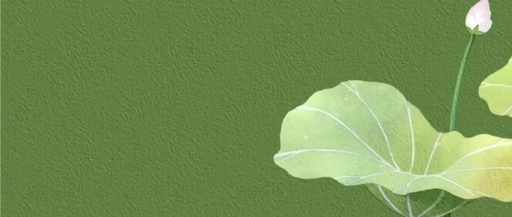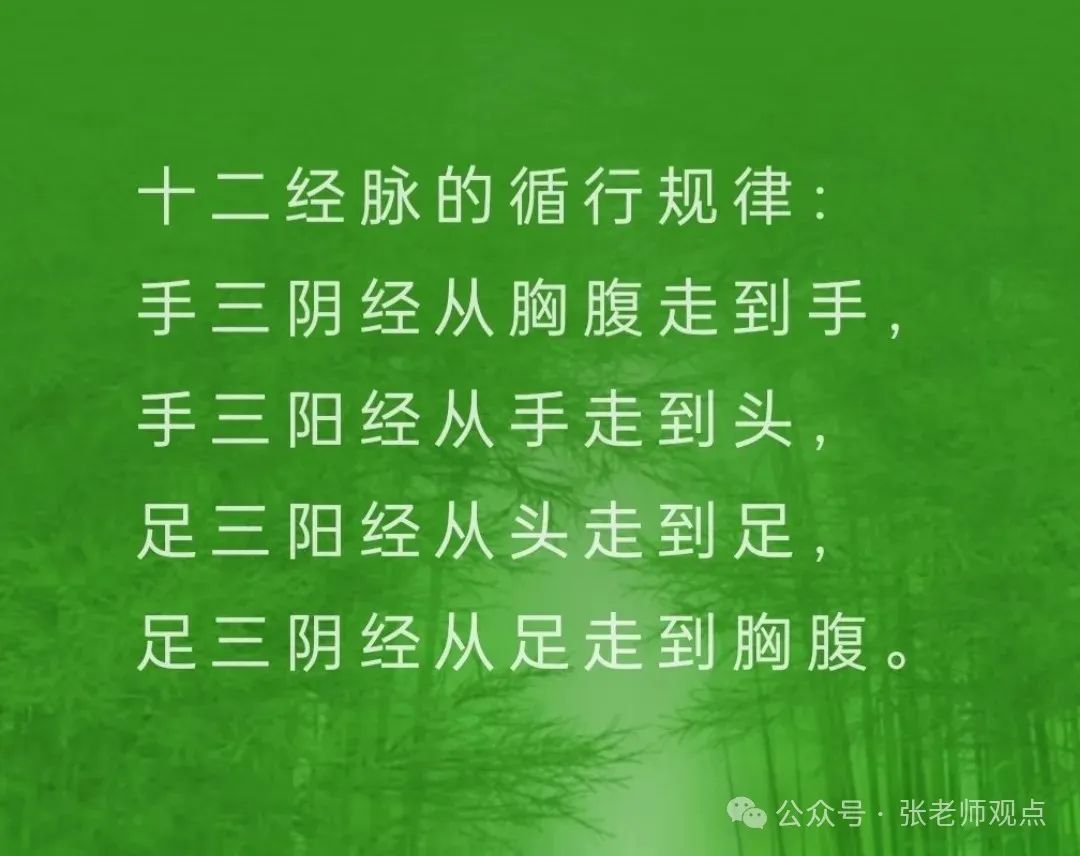
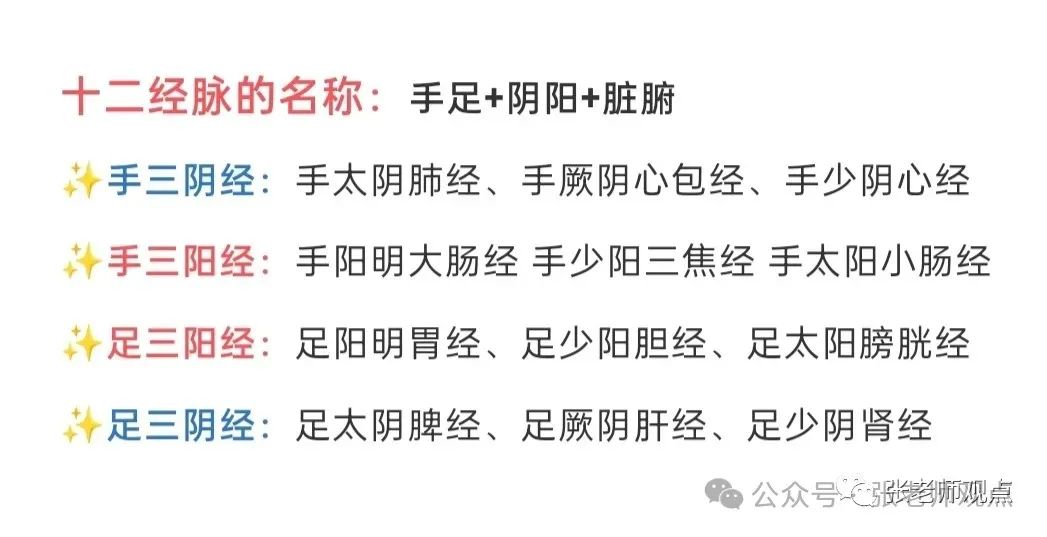
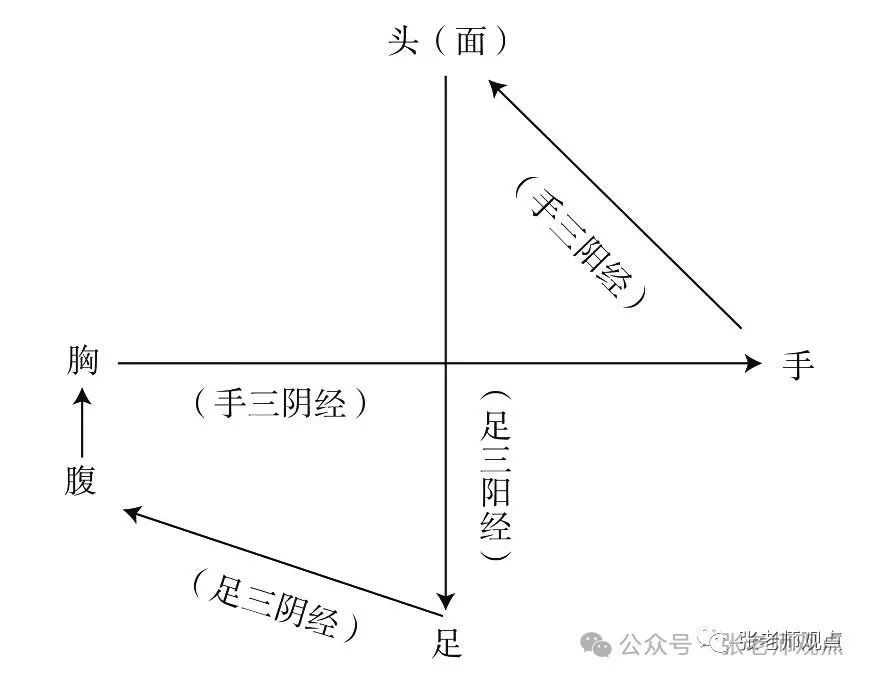 Liù jīng refers to tài yáng (Greater Yang), yáng míng (Bright Yang), shào yáng (Lesser Yang), tài yīn (Greater Yin), shào yīn (Lesser Yin), and jué yīn (Terminal Yin), which are the names of six types of organs and meridians, used to summarize the development patterns of exogenous diseases and various syndromes.
Liù jīng refers to tài yáng (Greater Yang), yáng míng (Bright Yang), shào yáng (Lesser Yang), tài yīn (Greater Yin), shào yīn (Lesser Yin), and jué yīn (Terminal Yin), which are the names of six types of organs and meridians, used to summarize the development patterns of exogenous diseases and various syndromes.
Bā gāng refers to yīn, yáng, biǎo, lǐ, hán, rè, xū, and shí, which are the most basic summaries of the location of disease changes in the human body, the nature of the disease, and the comparison of the strengths of the pathogenic and righteous forces.
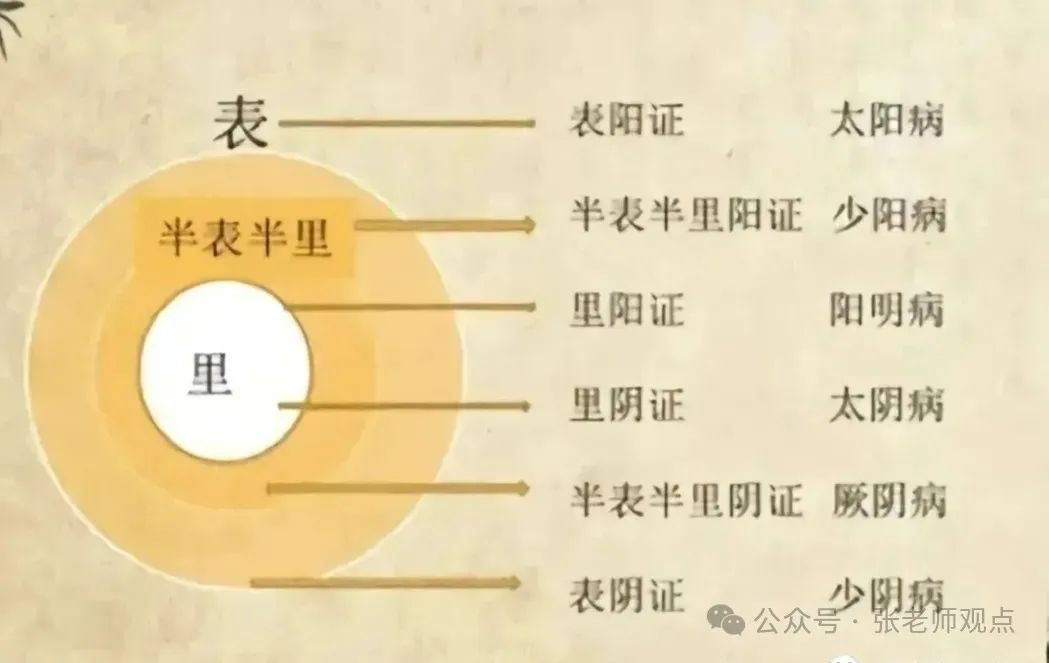
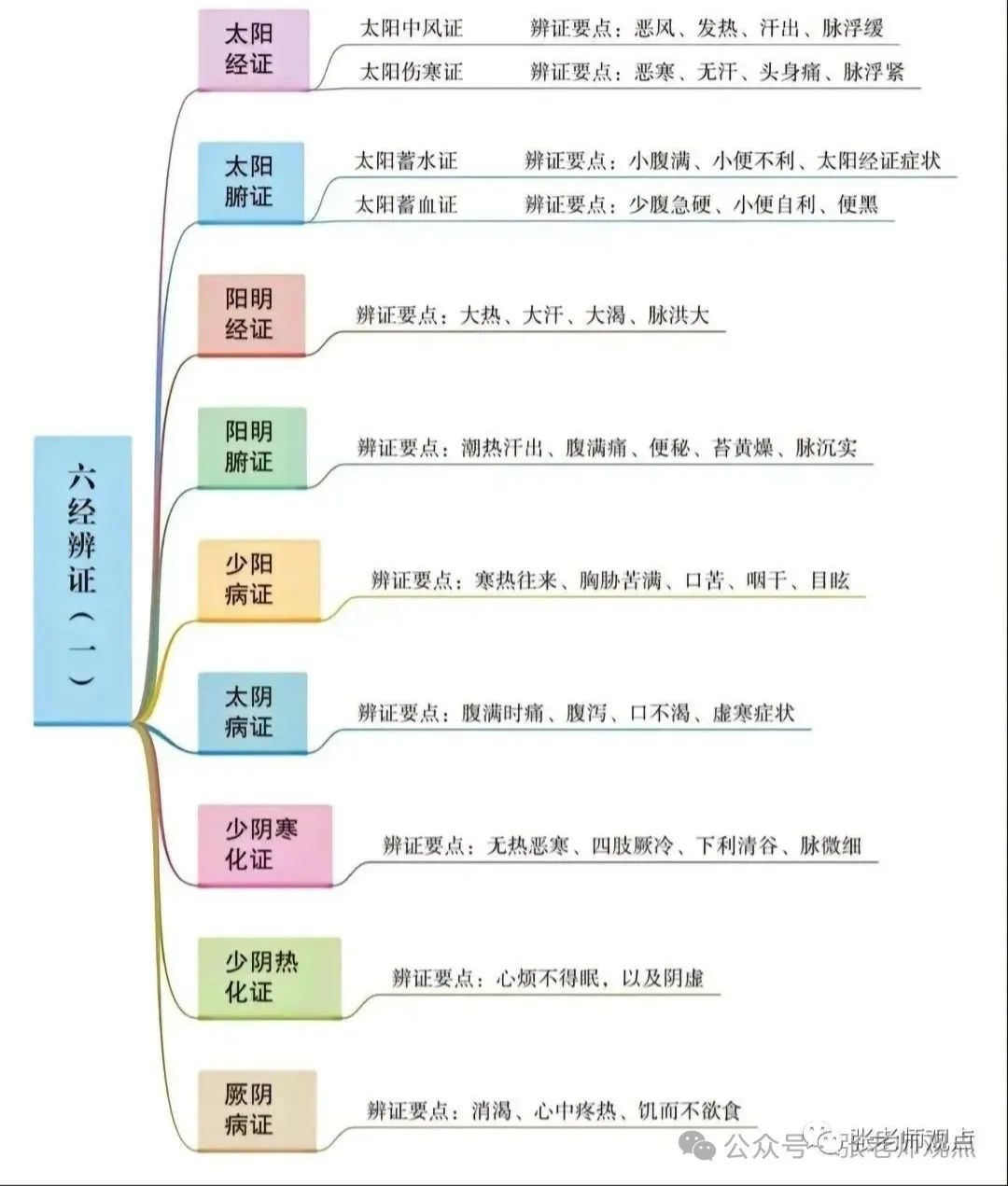
Combining the differentiation of the Eight Principles and the Six Meridians, this article is lengthy, so for ease of understanding, I have condensed an outline below before reading the main text:

1. Yīn yáng
1. Tài yáng bìng:
Yáng zhèng: mài fú (floating pulse) fā rè ér è wēn (fever with aversion to cold)Yīn zhèng: mài chén (deep pulse) wú rè ér è wēn (no fever with aversion to cold)
2. Yáng míng bìng
Yáng zhèng: shēn rè hàn chū, bù è wēn, fǎn è rè (body heat with sweating, no aversion to cold, but aversion to heat)
Yīn zhèng: yáng míng zhōng hán, nèi zhuǎn tàiyīn, ér bù néng shí (internal cold in Yangming, unable to eat), xiǎo biàn bù lì, shǒu zú chū liáng hàn, dà biàn chū yìng hòu táng (difficult urination, cold sweat on hands and feet, stool initially hard then loose).
3. Shào yáng bìng
Yáng zhèng: qí rén wǎng lái hán rè, xiōng xié kǔ mǎn, xīn fán xǐ ǒu (alternating chills and fever, fullness in the chest and hypochondria, irritability and nausea)
Yīn zhèng: jiàn ěr lóng, náng suō ér jué, shuǐ jiāng bù rù, shé tái hēi huá (deafness, contraction and cold limbs, inability to take in fluids, black and slippery tongue coating)
2. Biǎo lǐ
1. Tài yáng bìng biǎo lǐ zhèng.
(1) Tài yáng bìng biǎo zhèng: zǒng liù jīng ér tǒng yíng wèi, wèi yī shēn zhī wài fān (the six meridians are governed by Tài yáng, which controls the defensive qi, thus it is the exterior)
(2) Tài yáng bìng lǐ zhèng: Tài yáng xù shuǐ zhèng, Tài yáng xù xuè zhèng (Tài yáng water accumulation syndrome, Tài yáng blood accumulation syndrome)
2. Yáng míng bìng biǎo lǐ zhèng
(1) Yáng míng bìng biǎo zhèng: shēn rè, mù tòng, bí gān, bù dé wò (body heat, eye pain, dry nose, unable to lie down)
fā rè, è wēn, wú hàn, yuán yuán miàn chì, é tóu zuò tòng, mài fú ér cháng děng
(2) Yáng míng bìng lǐ zhèng: yáng míng wèi cháng lǐ zhèng wéi bìng (Yangming gastrointestinal interior syndrome as disease). Lǐ zhèng bù néng fā hàn, fā hàn zé shāng jīn yè, suǒ yǐ dà biàn nán (difficult defecation).
3. Shào yáng bìng biǎo lǐ zhèng
(1) Shào yáng bìng biǎo zhèng: shào yáng zhōng fēng, liǎng ěr wú suǒ wén, mù chì, xiōng zhōng mǎn ér fán zhě…
(2) Shào yáng bìng lǐ zhèng: shào yáng zhī wéi bìng, kǒu kǔ, yān gān, mù zhuàn yě (the disease of Shào yáng is characterized by bitter mouth, dry throat, and dizziness).
4. Tài yīn bìng biǎo lǐ zhèng
(1) Tài yīn bìng biǎo zhèng: fù mǎn ér ài gān, Tài yīn zhōng fēng, sì zhī fán tòng… Tài yīn pí jiā jīng biǎo wéi bìng (abdominal fullness and throat dryness, Tài yīn wind, pain in the limbs, Tài yīn spleen meridian as disease).
(2) Tài yīn bìng lǐ zhèng: wù xià zhī hòu, zài biǎo zhī yáo chuán rù Tài yīn zhī lǐ, chūxiàn fù mǎn shí tòng de Tài yīn lǐ zhèng (after mis-purging, the exterior pathogen enters the interior of Tài yīn, resulting in abdominal fullness and pain).
5. Shào yīn bìng biǎo lǐ zhèng
(1) Shào yīn bìng biǎo zhèng: Shào yīn bìng shǐ dé zhī, fǎn fā rè, mài chén zhě, má huáng xì xīn fù zǐ tāng zhǔ zhī (for Shào yīn disease, if the pulse is deep, it is necessary to warm it urgently, suitable for Sì nì tāng).
(2) Shào yīn bìng lǐ zhèng: Shào yīn bìng, mài chén zhě, jǐ yì Sì nì tāng (Shào yīn disease, if the pulse is deep, it is urgent to warm it, suitable for Sì nì tāng).
6. Jué yīn bìng biǎo lǐ zhèng
(1) Jué yīn bìng biǎo zhèng: shǒu zú jué hán, mài xì yù jué zhě, dāng guī sì nì tāng zhǔ zhī (for cold limbs, if the pulse is thin and about to disappear, it is suitable for Dāng guī sì nì tāng).
(2) Jué yīn bìng lǐ zhèng: “ruò qí rén nèi yǒu jiǔ hán zhě, yí dāng guī sì nì jiā wú zhū yú shēng jiāng tāng.”
3. Hán rè
1. Tài yáng bìng hán rè zhèng
(1) Tài yáng bìng hán zhèng: è hán, tǐ tòng, mài jǐn (aversion to cold, body pain, tight pulse)
(2) Tài yáng bìng rè zhèng: ① shì gǎn shòu wēn rè xié qì (is due to the invasion of warm heat evil) ② yóu yú fēng hán shù biǎo, rì jiǔ bù jiě, zé hán yù huà rè (due to wind-cold binding the exterior, if not resolved for a long time, cold stagnates and transforms into heat) ③ Tài yáng bìng, fā rè è wēn, rè duō hán shǎo… yí guì zhī èr yuè bì yī tāng (Tài yáng disease, fever with aversion to cold, more heat than cold, suitable for Guì zhī èr yuè bì yī tāng).
2. Yáng míng bìng hán rè zhèng
(1) Yáng míng bìng lǐ hán zhèng: yáng míng lǐ hán zuò huǐ (Yangming interior cold causes hiccups).
(2) Yáng míng bìng lǐ rè zhèng: yáng míng lǐ hán zuò ǒu, wú zhū yú tāng zhǔ zhī (Yangming interior heat causes vomiting, suitable for Wú zhū yú tāng).
Rè zài shàng, yù yú gé wǎn, zé xīn zhōng ào, shé shàng shēng tái; rè zài zhōng, zé kě yào yǐn shuǐ, kǒu gān ér zào; rè zài xià, zé mài fú fā rè, kě yào yǐn shuǐ, xiǎo biàn bù lì.
3. Shào yáng bìng hán rè zhèng
(1) Shào yáng bìng hán zhèng: xiōng xié mǎn mèn, xiǎo biàn bù lì, kě èr bù ǒu, dàn tóu hàn chū, fù zhōng zhàng, dà biàn táng, mài xián chí děng (chest and hypochondria fullness, difficult urination, thirst without vomiting, but sweating on the head, abdominal distension, loose stools, pulse wiry and slow).
(2) Shào yáng bìng rè zhèng: qí zhèng yǐ kǒu kǔ, xīn fán, yān gān, mù zhuàn wéi zhǔ (the main symptoms are bitter mouth, irritability, dry throat, and dizziness).
4. Tài yīn bìng hán rè zhèng
(1) Tài yīn bìng hán zhèng: pí yǒu hán, gù zhèng jiàn, yǐn bù kě (the spleen has cold, hence the symptoms of diarrhea without thirst).
(2) Tài yīn bìng rè zhèng: Tài yīn wéi shī tǔ, suǒ yǐ fā bìng yǒu shī rè yǔ hán shī de bùtóng (Tài yīn is damp earth, hence the disease has different manifestations of damp-heat and cold-damp).
5. Shào yīn bìng hán rè zhèng
(1) Shào yīn bìng hán zhèng: yù tǔ bù tǔ, xīn fán dàn yù mèi, yǐ xià jiāo xū yǒu hán, xiǎo biàn bái (wanting to vomit but unable to, irritability but wanting to sleep, lower jiao is deficient and cold, urination is white).
(2) Shào yīn bìng rè zhèng: xīn zhōng fán, bù dé wò…
6. Jué yīn bìng hán rè zhèng
(1) Jué yīn bìng hán zhèng: ruò qí rén nèi yǒu jiǔ hán zhě, yí dāng guī sì nì jiā wú zhū yú shēng jiāng tāng (if the person has long-standing cold inside, suitable for Dāng guī sì nì plus Wú zhū yú shēng jiāng tāng).
(2) Jué yīn bìng rè zhèng: “ruò qí rén nèi yǒu jiǔ hán zhě, yí dāng guī sì nì jiā wú zhū yú shēng jiāng tāng.”
4. Xū shí
1. Tài yáng bìng xū shí
(1) Tài yáng bìng biǎo xū zhèng:
Tài yáng bìng wéi biǎo zhèng, ruò biǎo zhèng hàn chū de, zé jiào biǎo xū zhèng. Guì zhī tāng zhǔ zhī (Tài yáng disease is an exterior syndrome, if the exterior syndrome has sweating, it is called exterior deficiency syndrome. Guì zhī tāng is the main treatment).
(2) Tài yáng bìng biǎo shí zhèng: Tài yáng bìng biǎo zhèng, ruò wú hàn ér chuǎn de, zé jiào biǎo shí zhèng. Má huáng tāng zhǔ zhī (Tài yáng disease is an exterior syndrome, if there is no sweating and wheezing, it is called exterior excess syndrome. Má huáng tāng is the main treatment).
2. Yáng míng bìng xū shí
(1) Yáng míng bìng lǐ xū zhèng: Tài yáng zhǔ biǎo, suǒ yǐ yǒu hàn wéi xū, wú hàn wéi shí. Yáng míng zhǔ lǐ, zé yǒu hàn wéi shí, wú hàn wéi xū (Tài yáng governs the exterior, hence sweating is deficiency, no sweating is excess. Yáng míng governs the interior, hence sweating is excess, no sweating is deficiency).
(2) Yáng míng bìng lǐ shí zhèng: “dà biàn nán” (difficult defecation).
3. Shào yáng bìng xū shí
(1) Shào yáng bìng xū zhèng: xiān yǔ xiǎo jiàn zhōng tāng yǐ fú zhèng qì zhī xū, hòu yòng xiǎo chái hú tāng (shì dāng qù huáng qín jiā sháo yào) yǐ hé jiě shào yáng zhī xié (first use Xiǎo jiàn zhōng tāng to support the deficiency of righteous qi, then use Xiǎo chái hú tāng to harmonize and resolve the evil of Shào yáng).
(2) Shào yáng bìng shí zhèng: xiōng xié kǔ mǎn, xīn xià jí, yù yù wēi fán, ǒu bù zhǐ, dà biàn mì jié, kǒu kǔ xīn fán, mài xián huá yǒu lì děng zhèng (chest and hypochondria fullness, urgent heart, slight irritability, persistent vomiting, constipation, bitter mouth, irritability, wiry and slippery pulse).
4. Tài yīn bìng xū shí
(1) Tài yīn bìng xū zhèng: jué yīn bìng hán zhèng de tǔ lì, shì yǐ tǔ wéi zhǔ ér xià lì wéi cì; ér Tài yīn bìng de hán zhèng tǔ lì, zé yǐ xià lì wéi zhǔ ér ǒu tǔ wéi cì (the vomiting and diarrhea of Jué yīn disease is mainly vomiting and secondary diarrhea; while the cold syndrome of Tài yīn disease is mainly diarrhea and secondary vomiting).
(2) Tài yīn bìng shí zhèng: dà shí tòng zhě, guì zhī jiā dà huáng tāng zhǔ zhī (for severe pain, suitable for Guì zhī jiā dà huáng tāng).
5. Shào yīn bìng xū shí
(1) Shào yīn bìng xū zhèng: Shào yīn bìng, mài wēi, bù kě fā hàn, wáng yáng gù yě (for Shào yīn disease, if the pulse is weak, sweating cannot be induced, due to loss of yang).
(2) Shào yīn bìng shí zhèng: “Shào yīn bìng, zì lì qīng shuǐ, sè chún qīng, xīn xià bì tòng, kǒu gān zào zhě, kě xià zhī, yí dà chéng qì tāng”
6. Jué yīn bìng xū shí
(1) Jué yīn bìng xū zhèng: yáng xū zhě: dà hàn chū, rè bù qù, nèi jū jí, sì zhī tòng, yòu xià lì jué nì ér è wēn zhě, sì nì tāng zhǔ zhī (for Yang deficiency, if there is profuse sweating, heat does not dissipate, internal urgency, limb pain, and diarrhea with aversion to cold, suitable for Sì nì tāng).
(2) Jué yīn bìng shí zhèng: yī “bìng rén shǒu zú jué lěng, mài zhà jǐn zhě, xié jié zài xiōng zhōng, xīn xià mǎn ér fán, jī bù néng shí zhě, bìng zài xiōng zhōng, dāng xū tǔ zhī, yí guā tǐ sǎn.”
Summary: Through the combination of the differentiation of the Eight Principles and the Six Meridians, each meridian has changes in the aspects of yīn yáng, biǎo lǐ, hán rè, and xū shí, reflecting the patterns of syndromes in the six meridians. Therefore, it has the significance of differentiation principles. However, the differentiation of the Eight Principles is an objective reflection based on the diseases of the six meridians. Thus, the Eight Principles and the Six Meridians are a unified organic whole and cannot be separated.
Traditional Chinese medicine’s differentiation theory reflects the physiological and pathological changes of meridians and organs. Therefore, only by using the method of differentiation of the Eight Principles can we encompass the disease locations of the meridians and organs, the nature of the diseases of the yīn yáng organs, as well as the cold-heat, righteous-evil, and deficiency-excess. This consistency allows for clarity and understanding.
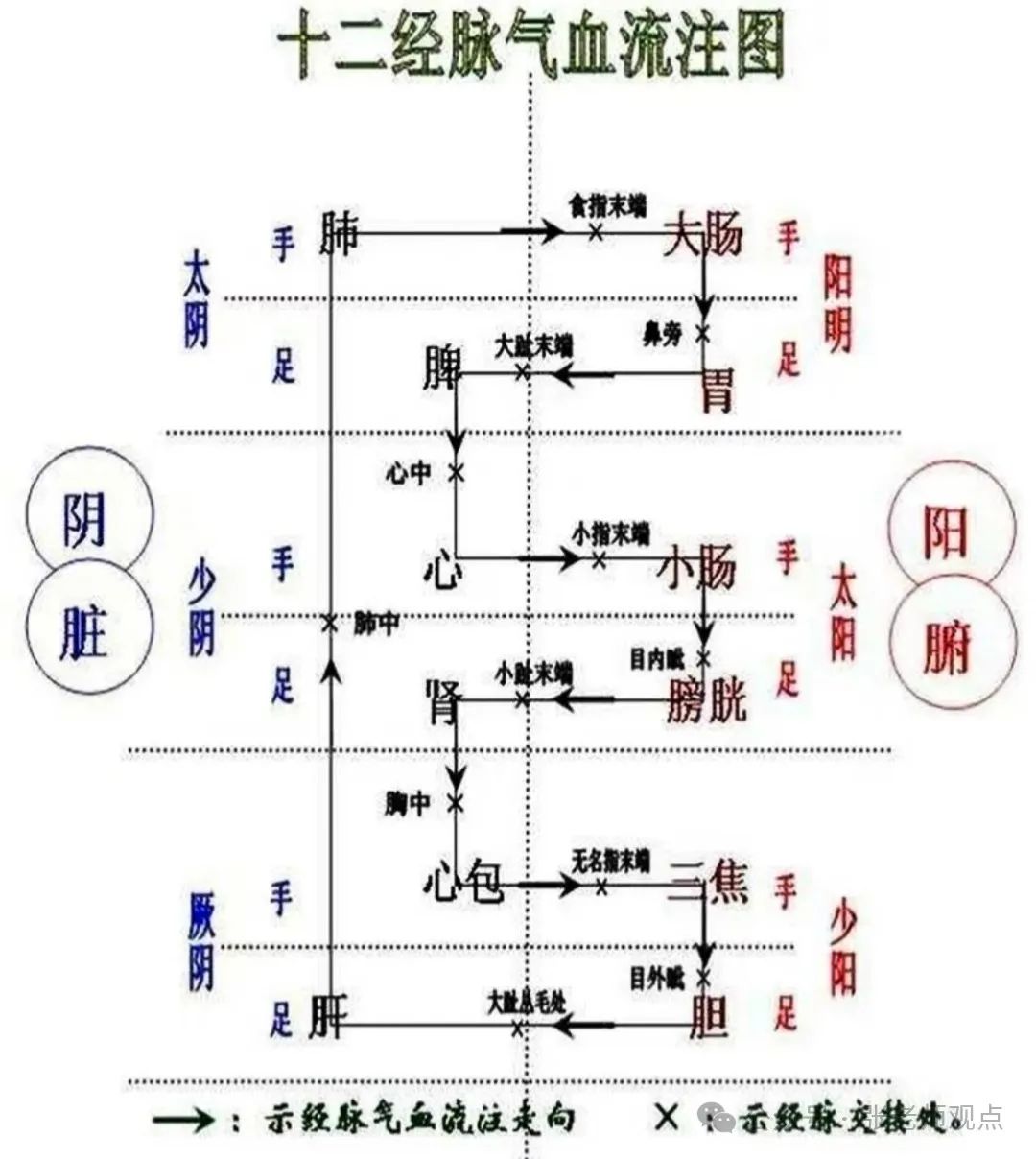
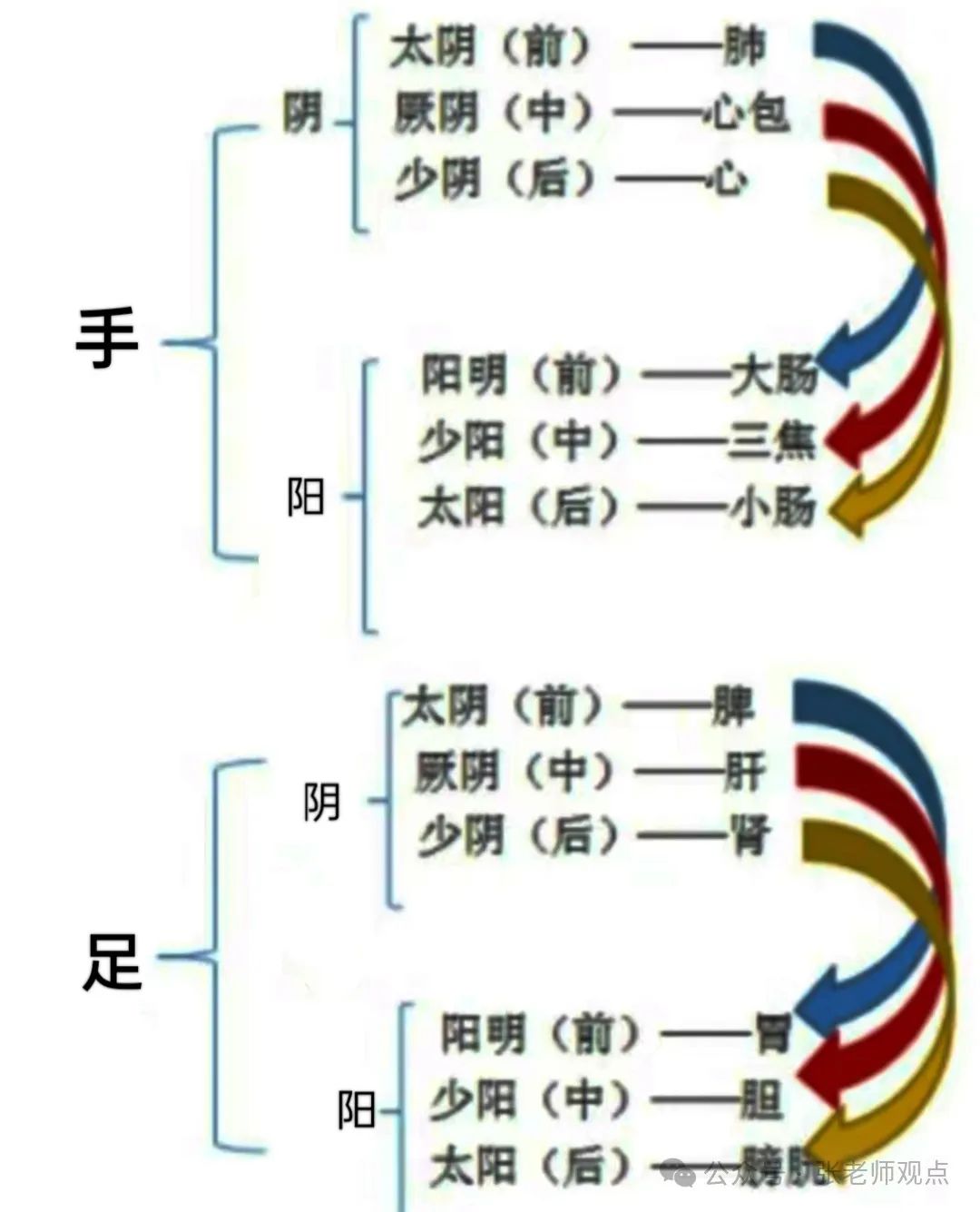
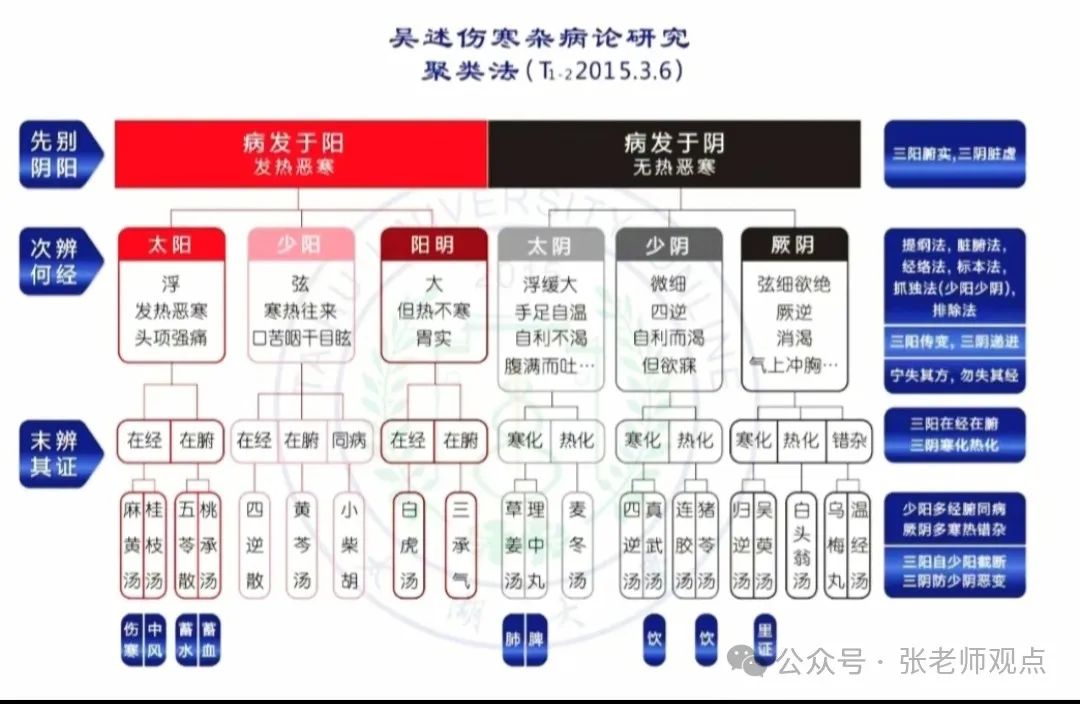
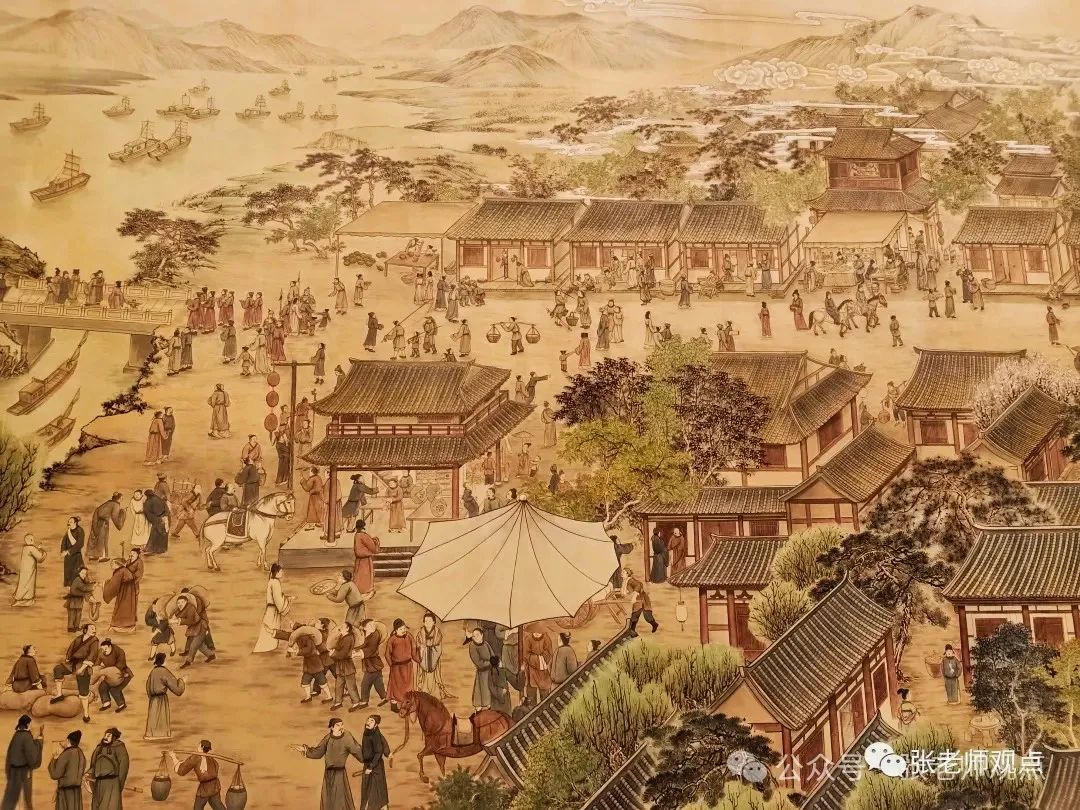
This article is an excerpt from reading notes, and the content is for health reference only. For illness, please go to a regular hospital for treatment.
For previous exciting content, please click the link:
1. Classic formulas for common treatments (collection)
2. Analysis of classic formulas (8 items)
3. Chinese patent medicines made from classic formulas (collection)
4. Comparison of classic formulas in the Treatise on Cold Damage
5. The ten classic formulas passed down through the ages
6. Illustrated classic formulas in the Treatise on Cold Damage (11 items)
7. Sweating with Guì zhī tāng, no sweating with Má huáng tāng, muscle relaxation with Gě gēn tāng, cough and asthma with Qīng lóng tāng, and Xiǎo chái hú tāng is the remedy for ten thousand diseases
8. What is a classic formula (ten)
9. Six meridian differentiation in the Treatise on Cold Damage
10. Eight major schools of traditional Chinese medicine
11. Major treatment methods for each “meridian disease”
12. Traditional Chinese medicine questionnaire
13. A glimpse into the “Jīn guì”
14. Six meridian differentiation and San Jiao differentiation
15. Four examinations and eight principles, six meridians, defensive qi, nutritive qi, blood, San Jiao, four qi, five tastes, rising and falling, sinking and floating
16. Let’s memorize the Treatise on Cold Damage together! ①
17. Let’s memorize the Treatise on Cold Damage together! ②
18. Let’s memorize the Treatise on Cold Damage together! ③
19. Let’s memorize the Treatise on Cold Damage together! ④
20. Let’s memorize the Treatise on Cold Damage together! ⑤
21. Causes of disease and thirteen key points
22. Organization of classic formulas (collection)
23. 106 classic formulas from the Essentials of the Golden Chamber (collection)
24. Classic formula constitution
25. This is how Chinese herbs are used (collection) ①
26. This is how Chinese herbs are used ②
27. This is how Chinese herbs are used (compatibility) ③
28. Fù zǐ vs. ròu guì
29. Small knowledge of the Treatise on Cold Damage ①

